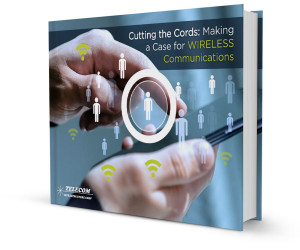
Mediums
As the technology industry continues to develop increasingly capable and impressive devices while the communications industry continues to share media and information, the resulting industry of telecommunications is constantly changing and evolving. One of the more fundamental parts of this industry is the modern telecommunications cable.
Electric and electromagnetic energy passing through wires could be viewed similar to the way that water passes through pipes. When one turns on the faucet of their sink and water comes out, the medium used to transfer the water was the primary source for connecting the sender and receiver. Even if amount of water existed and the individual in question was willing to pay for it, this connection could never occur without a reliable medium.
Signal Transduction
When information is received by a medium, sometimes the information may need to be adapted or changed in order to properly convey the information to the intended receiver. This is one of the lesser-known purposes of a telecommunications cable. Allowing complex machines to communicate specific information quickly and safely is an important task, but the differences in formatting and set-up can often make this process difficult if not for a proper way to convert signals so that the receiver can obtain them.
This process could be thought of as a “translator” would for linguistic purposes. By having the ability to receive information and convey it in a different way, diverse and otherwise incompatible machines can communicate effectively. This also encourages variation and experimentation with hardware, software, and media in the telecommunications industry as the challenge of making these new developments work with one another is one that many companies in the telecommunications industry are thoroughly dedicated to.
Shielding
The security of connections and data is an important aspect of the telecommunications industry. Users and providers alike want to ensure that the process of communicating media over different devices is secure and consistent. In order to accomplish this, common safeguards have been developed in order to prevent the most commonly occurring issues that occur during wired telecommunications.
Multiple insulated conductors can be “shielded” inside of a common conductive layer. Copper, aluminum, and polymer are some of the common materials used for this process. The wiring can be done in an intertwined or braided pattern, and the entire wire is usually covered with a shield afterwards. In some cases, this shield acts as a return path for the signal.
Shielded cables are designed to protect communications from disruptions in the form of electric and radio interference. This process separates cables somewhat, so that interference between them does not generate false alarms of potential data attacks or power failures. This is very similar to the way that protective covering can be placed on equipment to prevent each piece from damaging or affecting other pieces of equipment close to it.
Crosstalk
With information being transmitted from senders to receivers at such a rapid rate, sometimes unexpected results can occur. Even with high-quality equipment and proper cabling, it is possible for some signals that are sent to be received by unintended parties. This can result even when the unexpected receiver is not intentionally trying to intercept the signal.
This phenomenon is known as crosstalk. When information creates an unwanted effect on an unintended channel, it is usually the fault of undesired coupling. This type of undesired interference can also occur between unshielded wires transferring electromagnetic waves. WiseGeek gives a thorough description of the intricacies of crosstalk on their website.
Crosstalk could be considered to those bits of information which are overheard from a conversation that another group of individuals are having. Very simple, information is received not because an individual was deliberately trying to acquire it, but the information simply traveled to a medium which had the ability to receive it automatically.
Signal Loss
While cables are designed to function as mediums that facilitate the sharing of information, it should be noted that not all connection types are the same. When connections are made and information is being transferred, a number of factors affect the quality of this information in terms of its ability to be seen and heard by the receiver.
While a number of factors included cabling, power sources, and data types can affect this quality, the concept of signal loss indicates the failure of a receiver to receive incoming information due to a technical malfunction. This is often compared to the problems some humans have with seeing certain colors depending on their environment, obstacles in their way, or problems with their own vision.
Bandwidth
Given that cables are only designed to transport so much information at once, it should come as no surprise that information itself takes up some kind of measurable space. Bandwidth is a measurement of available or consumed information space. This is typically done in bit-rate format, with the capacity being calculated in metric multiples of bits per second.
A common way to think about bandwidth is to consider the act of placing a drain in a container of water. If the opening is small, only a small amount of water can pass through at once and thus it will take longer to drain the container. However as the pathway grows, the higher capacity allows for increased speed.

 Wired networking is quickly becoming the dial up internet of the current decade as wireless technology is advancing at an incredibly rapid pace. Is going wireless in the best interest of your business? Download our FREE book right now entitled "Cutting the Cords: Making a Case for Wireless Communications" and find out!
Wired networking is quickly becoming the dial up internet of the current decade as wireless technology is advancing at an incredibly rapid pace. Is going wireless in the best interest of your business? Download our FREE book right now entitled "Cutting the Cords: Making a Case for Wireless Communications" and find out!